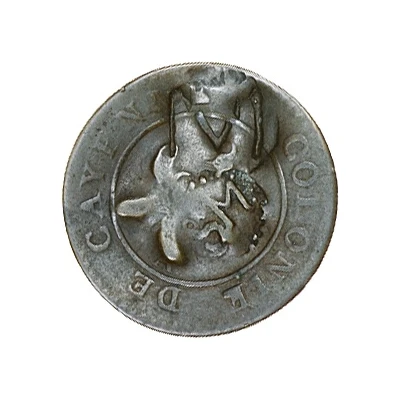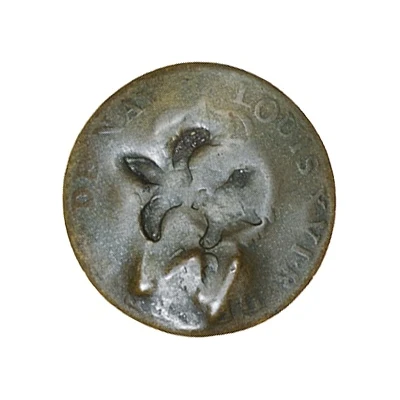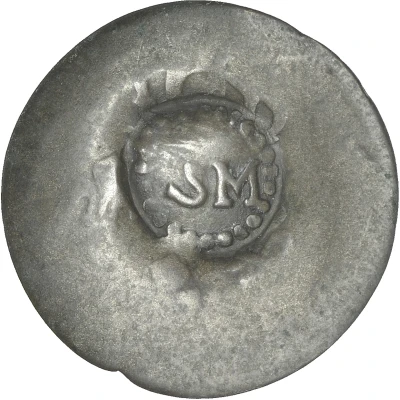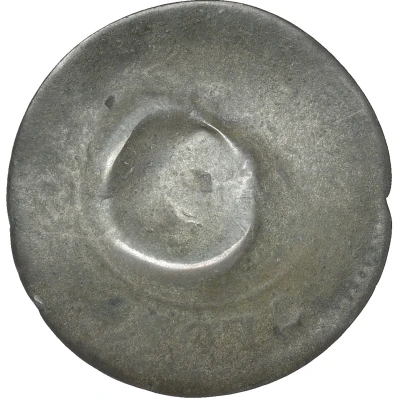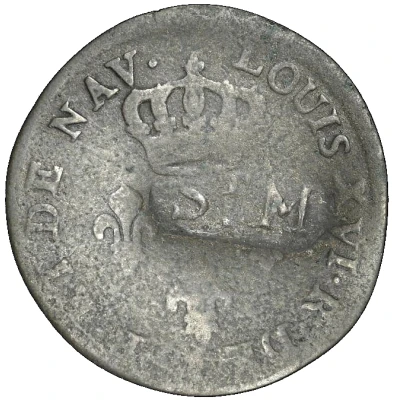
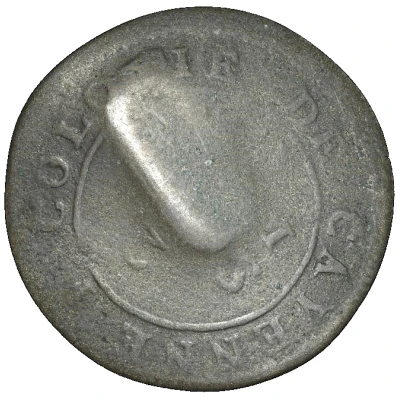

© Dix Noonan Webb
Stuiver "Cayenne-Stuiver" Countermark rectangular STM ND
1798 year| Billon | 1.8 g | 23 mm |
| Issuer | Sint Maarten (Netherlands Antilles) |
|---|---|
| Type | Standard circulation coin |
| Year | 1798 |
| Value | 1 Stuiver |
| Currency | Stuiver |
| Composition | Billon |
| Weight | 1.8 g |
| Diameter | 23 mm |
| Thickness | 1 mm |
| Shape | Round |
| Technique | Milled, Countermarked |
| Demonetized | Yes |
| Updated | 2024-10-06 |
| Numista | N#158966 |
|---|---|
| Rarity index | 100% |
Reverse
Cayenne Colony 2 Sous piece, which displays stacked legend surrounded by legend.
Edge
Plain
Comment
Many false Stuivers were imported to Sint Maarten, so it was decided that the real coins were to be marked. The first attempt to this was made on 29-12-1797 with a bundle of 7 arrows. The Stuivers without the mark were considered obsolete. Since the mark was easily counterfeit it was already replaced 3 days later by the square and round STM marks.Scho/II remarks that the official documents claim the production of this coin (Publicatie 28-11-1805), but non have been found in any collection at the moment of writing (1951). Perhaps that is the reason why this coin is not mentioned by Krause. Passon (2022) does mention this type accompanied with an image.
Interesting fact
The "Cayenne-Stuiver" coin from Sint Maarten (Netherlands Antilles) is interesting because it has a unique countermark, a rectangular "STM" stamp, which was added to the coin to verify its authenticity. This countermark was used by the Dutch West India Company to ensure that the coin was genuine and not a counterfeit. The use of countermarks on coins was a common practice in the 18th century, but the "Cayenne-Stuiver" coin is a rare example of a coin with a rectangular countermark.
